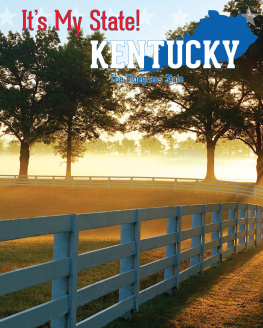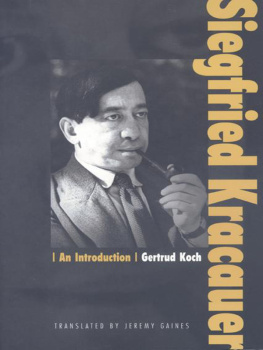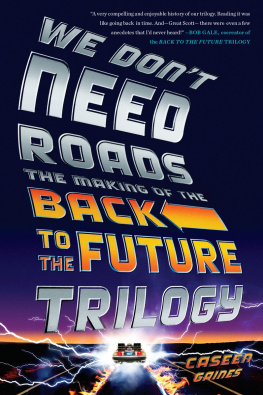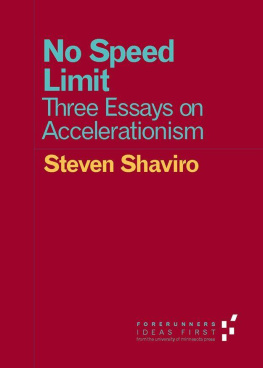Steven Gaines - The Skys the Limit
Here you can read online Steven Gaines - The Skys the Limit full text of the book (entire story) in english for free. Download pdf and epub, get meaning, cover and reviews about this ebook. year: 2005, publisher: Little, Brown and Company, genre: Detective and thriller. Description of the work, (preface) as well as reviews are available. Best literature library LitArk.com created for fans of good reading and offers a wide selection of genres:
Romance novel
Science fiction
Adventure
Detective
Science
History
Home and family
Prose
Art
Politics
Computer
Non-fiction
Religion
Business
Children
Humor
Choose a favorite category and find really read worthwhile books. Enjoy immersion in the world of imagination, feel the emotions of the characters or learn something new for yourself, make an fascinating discovery.

- Book:The Skys the Limit
- Author:
- Publisher:Little, Brown and Company
- Genre:
- Year:2005
- Rating:5 / 5
- Favourites:Add to favourites
- Your mark:
- 100
- 1
- 2
- 3
- 4
- 5
The Skys the Limit: summary, description and annotation
We offer to read an annotation, description, summary or preface (depends on what the author of the book "The Skys the Limit" wrote himself). If you haven't found the necessary information about the book — write in the comments, we will try to find it.
The Skys the Limit — read online for free the complete book (whole text) full work
Below is the text of the book, divided by pages. System saving the place of the last page read, allows you to conveniently read the book "The Skys the Limit" online for free, without having to search again every time where you left off. Put a bookmark, and you can go to the page where you finished reading at any time.
Font size:
Interval:
Bookmark:
Copyright 2005 by Steven Gaines
All rights reserved. No part of this book may be reproduced in any form or by any electronic or mechanical means, including information storage and retrieval systems, without permission in writing from the publisher, except by a reviewer who may quote brief passages in a review.
Hachette Book Group
237 Park Avenue
New York, NY 10017
Visit our website at www.HachetteBookGroup.com.
The Warner Books name and logo are trademarks of Hachette Book Group, Inc.
First Edition: June 2005
ISBN 978-0-7595-1388-4
Contents
Also by Steven Gaines
Philistines at the Hedgerow: Passion and Property in the Hamptons
Obsession: The Lives and Times of Calvin Klein (with Sharon Churcher)
Simply Halston: The Untold Story
Heroes and Villains: The True Story of the Beach Boys
The Love You Make: An Insiders Story of the Beatles
Me, Alice: The Biography of Alice Cooper
Marjoe: The Biography of Evangelist Marjoe Gortner
The Club (novel)
Another Runner in the Night (novel)
FOR BERNARD BERKOWITZ
Though one could dine in New York,
one could not dwell there.
Oscar Wilde, 1887
CARRIAGE
TRADE
O n that day in June 1999 when Tommy Hilfiger got into 820 Fifth Avenue, on the Upper East Side of Manhattan, where these kinds of things duly matter, the news was examined and deciphered like some sort of a social Rosetta stone. The ladies with the tanned, slender arms in their sleeveless Carolina Herrera dresses picked over the detailsthe square footage, the price, his wife, his moneyalong with the cheese souffl every day at lunch that week at Swiftys. Why would eightyish society nabob Jayne Wrightsman, who reportedly controlled everything at 820 Fifth Avenue, down to what color the lampshades were in the lobby, let Tommy Hilfiger in? What did that mean? Was Fifth Avenue turning into Central Park West?
Fifth Avenue is the address against which all others are measured. It cleaves Manhattan down the middle, East from West, the geographic arbiter of status. It divides the Croesusean rich from the merely wealthy, the influential from the truly powerful. From its southernmost tip, at Washington Square in Greenwich Village, to Ninety-sixth Street, where it stops mattering, it is six and a half miles long, most of it high-end retail space and skyscraper office buildings. But on the mile and a half facing Central Park, from Fifty-ninth Street to Ninety-sixth Street, in sixty-three co-operative and five condominium apartment buildings, there lives the greatest consolidation of private wealth ever assembled in one place. Of that stretch of the avenue, 820 Fifth Avenue was one of the top two great houses, as the old-time management referred to the buildings they lovingly tended.
I would have thought Eight-twenty Fifth was the best address in the city, Edward Lee Cave, the don of the carriage-trade brokers sniffed, meaning pre-Hilfiger. At the carriage-trade brokerage houses, selling an apartment at 820 Fifth Avenue is the equivalent of receiving the real estate Lgion dHonneur. The building is so exclusive, the co-op board so difficult, that even the loftiest plutocrats have been repelled from its doors, including three billionairesRevlon chief Ronald Perelman, financier Asher Edelman, and oilman Frederick Koch. Yet there it was, that Wednesday in June 1999, in a big, black bold headline in the salmon-colored New York Observer: TOMMY BOYS BIG ADDRESS: O.K.D AT 820 FIFTH. The article confirmed that baggy-clothing designer Tommy Hilfiger had been approved to buy, for $12.5 million, an eighteen-room, six-bedroom apartment at 820 Fifth Avenue from the estate of the poet Louise Crane and that high end brokers were in shock.
Truth be told, nothing seemed shocking anymore on Fifth Avenue. It was safe to say that there wasnt a coupon-clipping WASP dreadnought in sight. The real high-WASP families had long ago moved to quiet little buildings on fashionable side streets where the building profiles were lowerand so were the maintenance fees. As for real society on Fifth Avenue, well, the old saw is that real society died in 1908 with Mrs. William Backhouse Astor Jr. In any event, Tommy Hilfiger was hardly the first new face to stake his claim to a rung in the social ladder, as one character in Edith Whartons House of Mirth describes a Fifth Avenue address. The history of Fifth Avenue has always been that of new money being trumped by newer money. The only difference now is that the cycles come much more quickly, the people are much richer, and new money smells better than it used to. Gertrude Vanderbilt once cautioned her grandchildren about men who made their money from oil and livestock: It takes three generations to wash off oil and two to exterminate the smell of hogs. She also longed for a more genteel time when Society was still Society and not a hodgepodge of tradesmen and stockbrokers. Men who made their money in oil or steel were known as shoddyites and nouveau riche families were nicknamed the McFlimsies. The moneymen who got rich on Wall Street were disparaged as bouncers. In the 1890s Ward McAllister was still trying to separate the nobs of breeding and position and the swells, who had to entertain to be smart. Entertaining to be smart meant a great deal on Fifth Avenue. All of the generations of Fifth Avenue residentsFifth Avenoodles, as the newspapers mocked them in the 1800swere always furiously social people who showed off their wealth and class by being voracious collectors of art, food, furniture, and clothing and givers of grand parties and balls.
When the name FIFTH AVENUE, in capital letters, appeared for the first time on the historic Commissioners Plan of 1811, it was only a designated number on a map, without any special distinction other than it started at what once was a potters field called Washington Square Park and ran straight up the island, all the way north to the Harlem River. The streets association with the rich began in 1834 when millionaire farmer and landholder Henry Brevoort, age eighty-seven and known as the Old Gentleman by his family, built himself a two-story, flat-roofed Georgian mansion on the corner of Ninth Street and Fifth Avenue, then three miles north of the center of the city, and chained a bear to a stake on his front lawn as entertainment. Six years later, one evening in February 1840, Brevoort inaugurated the street as the home of lavish entertaining by giving the second masked ball ever to be held in Manhattan, according to the next days newspapers, for 500 people. Legend has it that two young guests elopedthe British consuls daughter, who wore a costume of floating gauzes, bracelets, a small coronet of jewels and a risoe[sic]-colored bridal veil, and a lad from a wealthy southern family, who wore cap and bells and cockle shells aglistening all in a row, according to one accountand caused such a scandal that society banned masked balls for years to come.
Upper Fifth Avenue of today is a big residential boulevard, 100 feet wide, with mostly tall apartment buildings and hardly a mansion (or a ballroom) for blocks. There are roomy twenty-foot-wide sidewalks on either side of the streetthe park side is cut pavement stoneand a center asphalt motorway sixty feet across, which is during the day a tangle of taxis, limousines, and buses headed south. At night the street is less crowded, sleeker, and a little surreal in its Stonehenge-like majesty. The silver-gray apartment buildings, especially the stately limestone fortresses, seem unapproachable and unoccupied. It is rare to see any movement, or even a person, in the windows of an apartment on Fifth Avenue, and oddly at times there are only a few people walking on the street. People who live on Fifth Avenue invariably never stroll on it but walk one block east to Madison Avenue, where there are interesting shop windows and fashionable restaurants. On many a clear spring night you can see for a mile down Fifth Avenue with not a soul in sight, except maybe a jogger or dog walker headed for Central Park. Most people go from taxi or limousine to the protective shield of a building canopy and disappear into the lobby, the portals guarded by uniformed doormen who monitor the street from behind the wrought-iron filigree covering the thick glass front doors.
Next pageFont size:
Interval:
Bookmark:
Similar books «The Skys the Limit»
Look at similar books to The Skys the Limit. We have selected literature similar in name and meaning in the hope of providing readers with more options to find new, interesting, not yet read works.
Discussion, reviews of the book The Skys the Limit and just readers' own opinions. Leave your comments, write what you think about the work, its meaning or the main characters. Specify what exactly you liked and what you didn't like, and why you think so.









